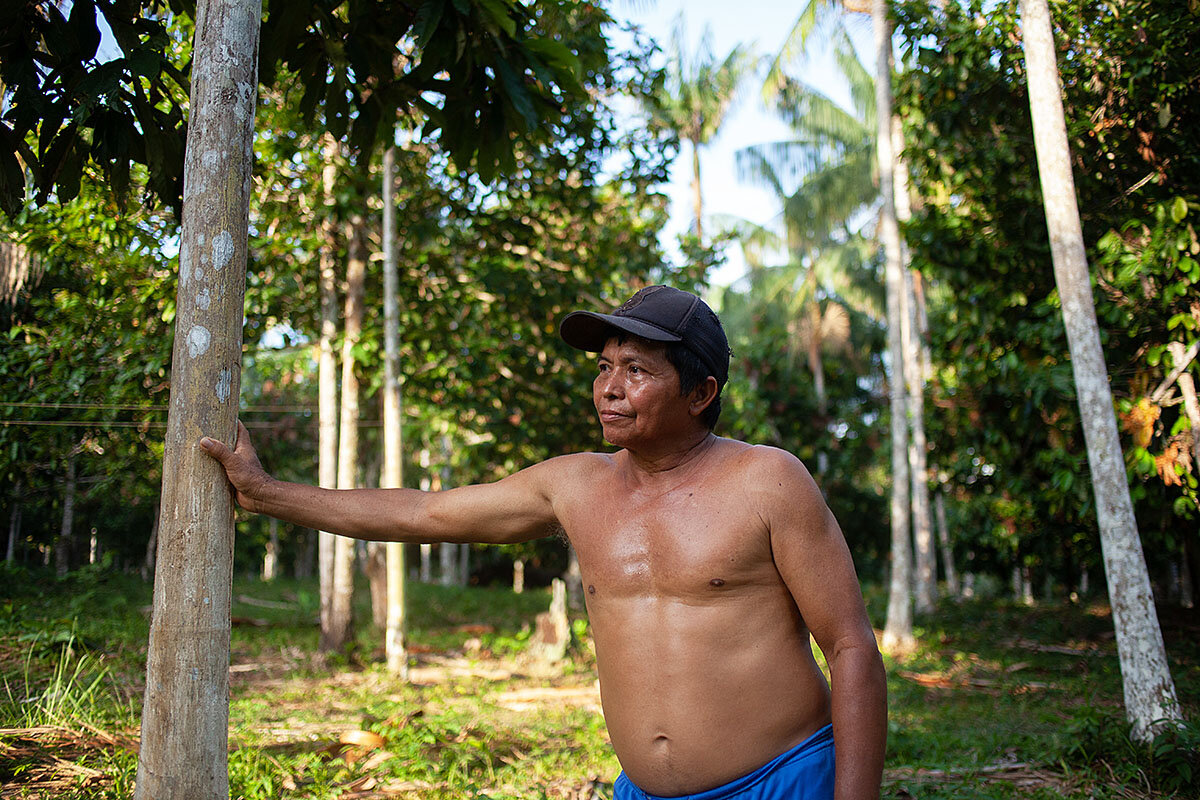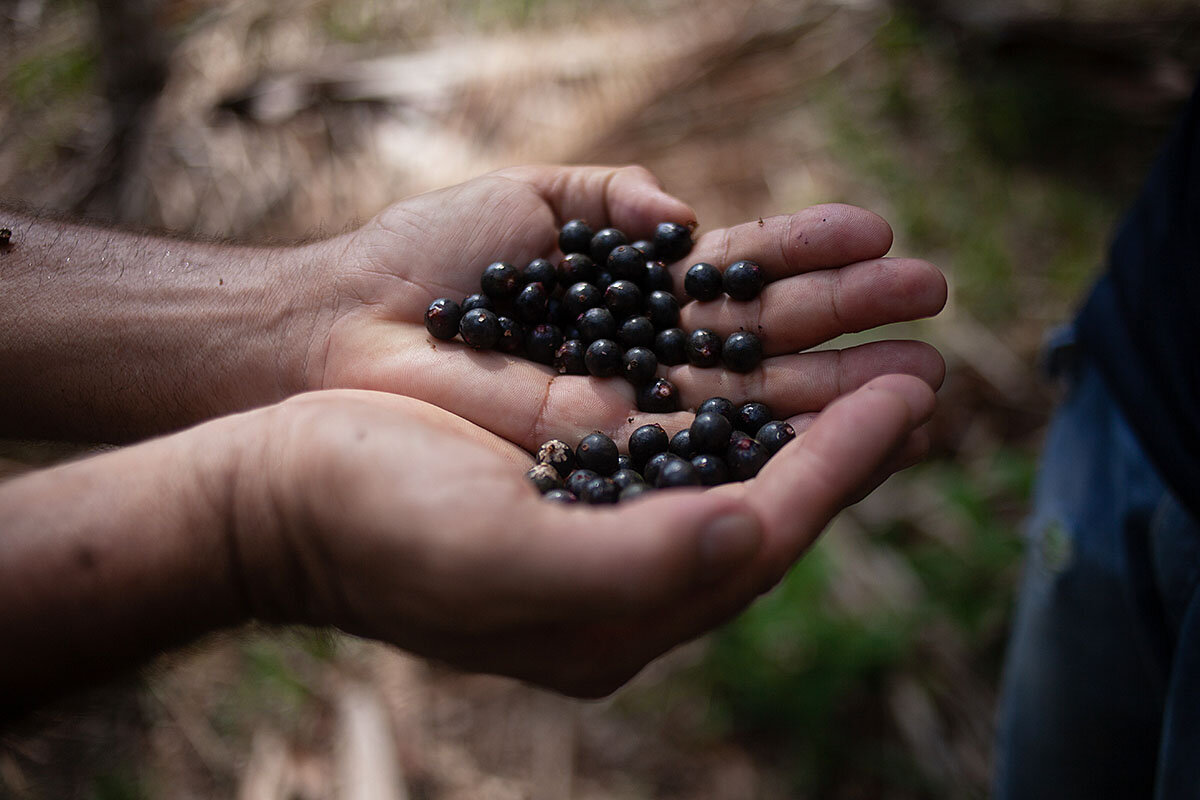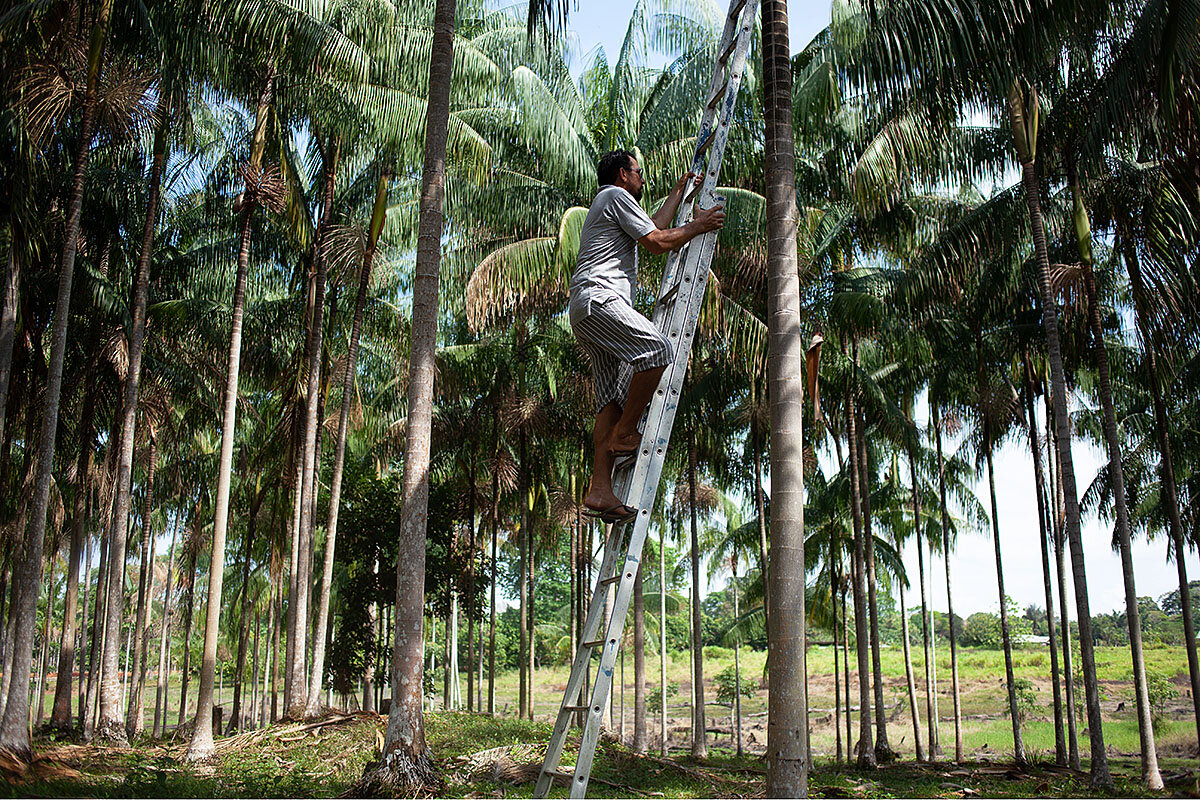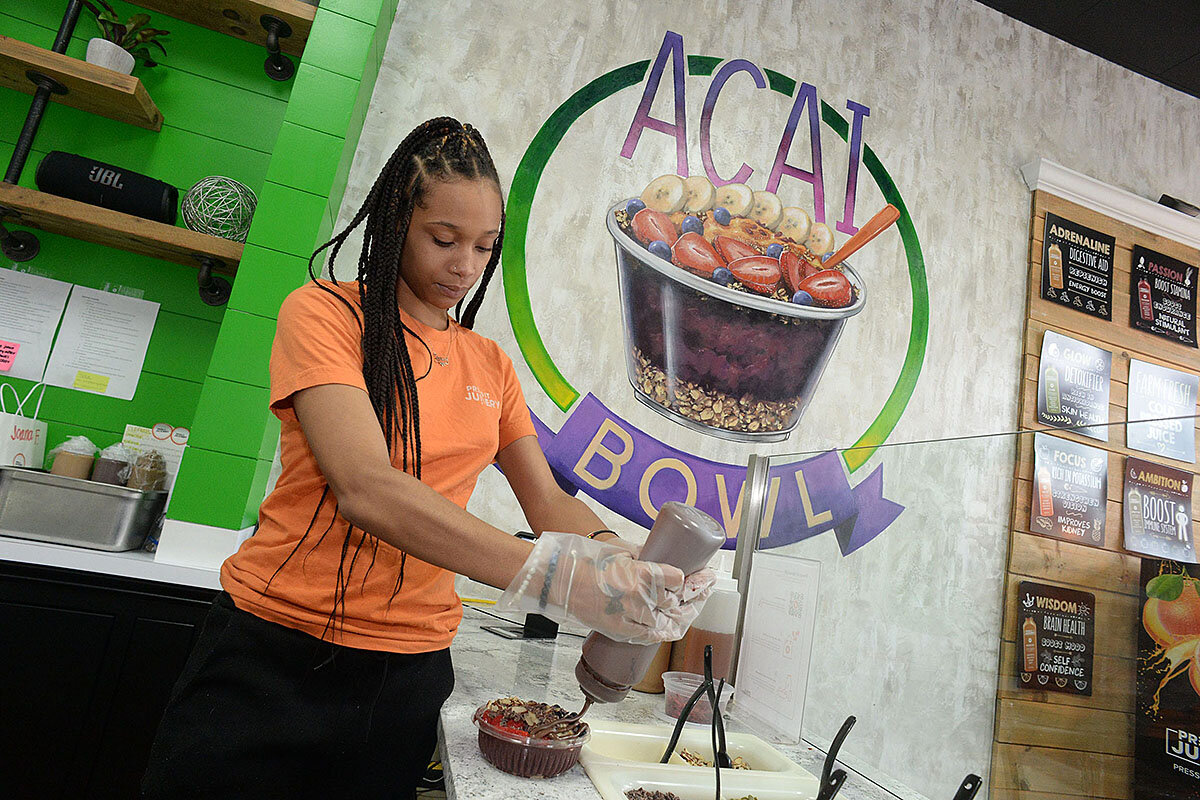Brazilian âwonder berryâ offers farmers and the Amazon a future
Loading...
| Autazes, Brazil
Squinting into the late afternoon sun, Nelson Galvão leans against the trunk of a towering açaà palm. About 20 feet above his head, nestled into the crown of the palm, clusters of deep-purpleÌıberries weigh down the treeâs slender branches.
âAçaà has been good to us,â Mr. Galvão says. âIf you know how to care for it right, it brings in a good income. Itâs our familyâs survival.â
For the last two decades, Mr. Galvão has been cultivatingÌıaçaÃ, a tart berry native to the Amazon rainforest that has become a global health food sensation and a business worth nearly a billion dollars a year. About 2,000 açaà palms grow on his lot here, some 70 miles from the Amazon capital of Manaus, yielding enough pulp each harvest to earn him about $2,150, the equivalent of a minimum wage.
Why We Wrote This
Can farmers and the Amazon coexist? The açaà palm, bearing a fruit prized worldwide, shows how it can be done.
Mr. Galvão is working hard to make a living without destroying the forest. Instead of toppling trees, he restores the land by planting banana, pineapple, and ³¦³Ü±è³Ü²¹Ã§³Ü â a close relative of cacao â in the gaps between his palms.
âGrowing up, I saw my parents clearing big pieces of land, clearing everything,â Mr. Galvão says. âNow I know that, if we just destroy without restoring, all this will come to an end.â
Many of Mr. Galvãoâs neighbors have chosen a different path though. The emerald jungle canopy here is fast giving way to cattle pasture, as in much of the Brazilian Amazon, and Mr. Galvão is feeling the impact.
Açaà palms usually thrive in this sun-drenched corner of the Amazon, where flood plains swell during the rainy season to form a maze of land and water. This year, though, his trees yielded less as Brazil was hit by its worst drought in almost a century. Then this part of the Amazon was struck by devastating flash floods.
âWe see these weather disasters and we really worry. We wonder about future harvests,â he says. âBut the cattle ranchers â they are not worried. They cut, cut, cut. They deforest everything. And we, the small growers, are the ones who end up paying the price.âÌıÌı
A âwonder berryâ spreads
Mr. Galvão is not alone in his concerns for the future. The Brazilian Amazon is being razed and burned at a dizzying pace, with deforestationÌı,Ìıdespite government vows to curb the destruction. Scientists warn the rainforest is nearing a tipping point when it will turn into a savanna, with grave consequences for the climate. And açaà â along with other native species â could disappear from swaths of the Amazon by 2050, researchers warn.
âSome areas where açaà palms grow today will no longer be suitable in a future climate scenario,â says Pedro Eisenlohr, professor at the State University of Mato Grosso and co-author of a recent study forecasting climate change in the Amazon.
âThis poses a huge problem for the familiesâ living in such vulnerable areas, Professor Eisenlohr says, âbecause they are counting on açaà for their survival. And it might not be there in the future because of climate change.â
Full of fiber, açaà was a staple food in the Amazon long before it turned into a globally coveted superfood. For generations, Indigenous and traditional people harvested and ate the berries that grow on native palms near rivers at the edge of the jungle.
The popularity of this âwonder berryâ spread to gyms and surf shacks across Brazil in the 1990s. Before long, açaà made a name for itself abroad too and quickly amassed a loyal following, making its way into smoothies and protein bars in cities like Los Angeles, London, and Tokyo. Exports have grown more than a hundredfoldÌıin the past 10 years.
And the growth has shown no signs of slowing. Last year, exports jumped by 50% from the year before, and globally, theÌıaçaà market is now worth about $720 million annually, says Renata Guerreiro, project coordinator at the Terroá Institute, a nonprofit focused on sustainable development in the Amazon.
âIt is a real force within the Amazonâs bio-economy,â says Ms. Guerreiro, whose organization runs an initiative promoting sustainable production of açaÃ. âAnd it carries enormous potential.â
The surge in demand for the nutrient-packed berry has been welcome news in the Amazon, promising a path to prosperity for small-scale growers. Although someÌı over the unbridled growth, fearing growers may raze virgin forest to make space for more açaÃ, the berry has proved a sustainable source of income for most growers, often cultivated within the forest.
A rare bright spot
Luis Carlos Gomes experienced the açaà boom firsthand. When he was growing up, the fruit was a lunch staple rather than a business opportunity. When he started planting the berry 12 years ago, he was one of few growers in Autazes excited about its potential. But soon that changed.
âBefore, there was no market for açaÃ,â Mr. Gomes says. âPeople only picked it for their families to eat. But, all of a sudden, ourÌıaçaà started selling and selling. And other people got excited about planting it too.â
Mr. Gomes, one of the largest producers in the Autazes region, is making big plans for the future too. He hopes to start an açaà producersâ association, and he wants to plant more açaà on his 14-hectare lot, expanding from 8,000 palms to about 10,000.
âOut there in other countries, açaà has become well known and much loved by people,â he says proudly. âWe hope the demand will only grow.â
Today, some 120,000 families live from açaà production across Brazil, cultivating about 1.6 million metric tons of fruit per year, Ms. Guerreiro says. Further benefits could be gained if Brazilian companies processed more of the fruit locally.
The industry has come in for criticism due to allegations about the use of child labor, but as the destruction of the Amazon advances, açaà has emerged as a rare bright spot in the fight to save the rainforest.ÌıProjects promoting the sustainable cultivation of the berry aim to make preserving the forest more lucrative than razing it. In already deforested areas, planting more açaà is also helping restore degraded forests while providing local people with an income.
âAçaà is really important for the generation of sustainable income in the Amazon,â Ms. Guerreiro says. âAnd itâs also a key to preservation, as long as it is grown in a way that minimizes impact ... and its expansion is done in a sustainable way.â
Now that climate change is threatening the açaà palms, environmentalists worry that some growers, unable to make a living from the forest standing, will move to raze it, turning the land into pasture.
Mr. Gomes also worries about what climate change might mean for his açaà trees. Still, for now, he says the future is bright.
âThe droughts, the floods â it all worries me, of course,â he says, steadying a ladder as his son climbs up a palm in search of the very last berries of the harvest. âBut we are doing our part. We are planting trees. And weâre putting our faith in açaÃ.â







